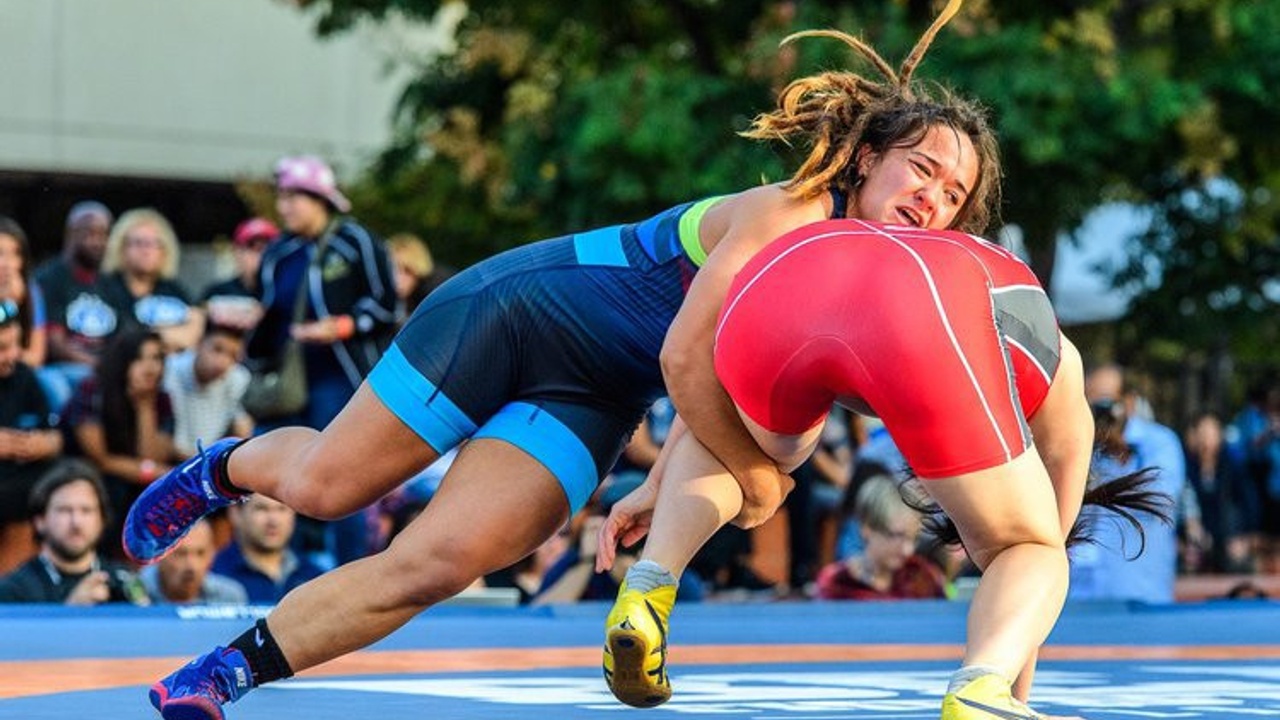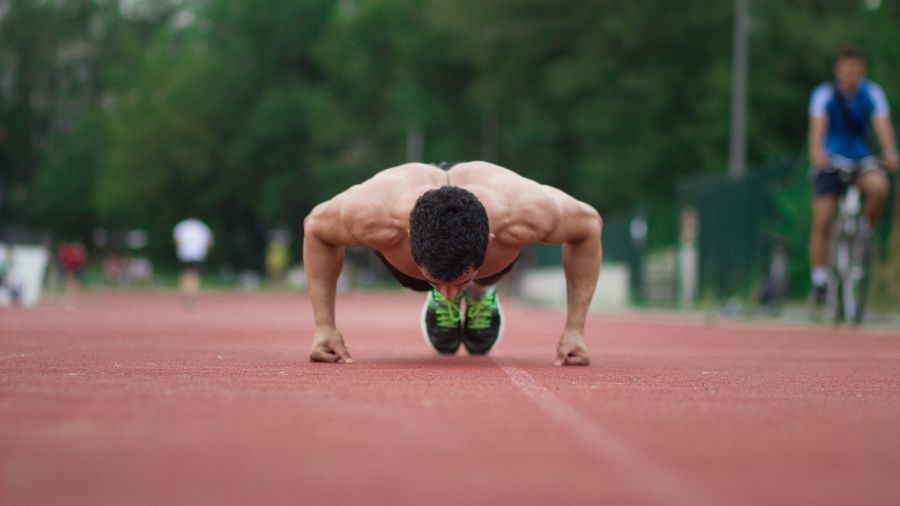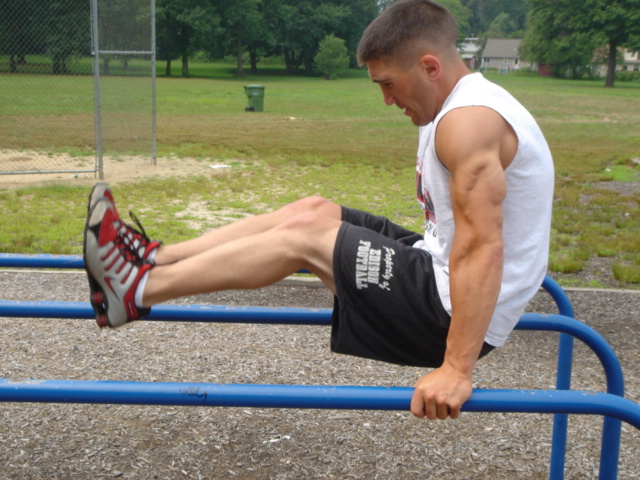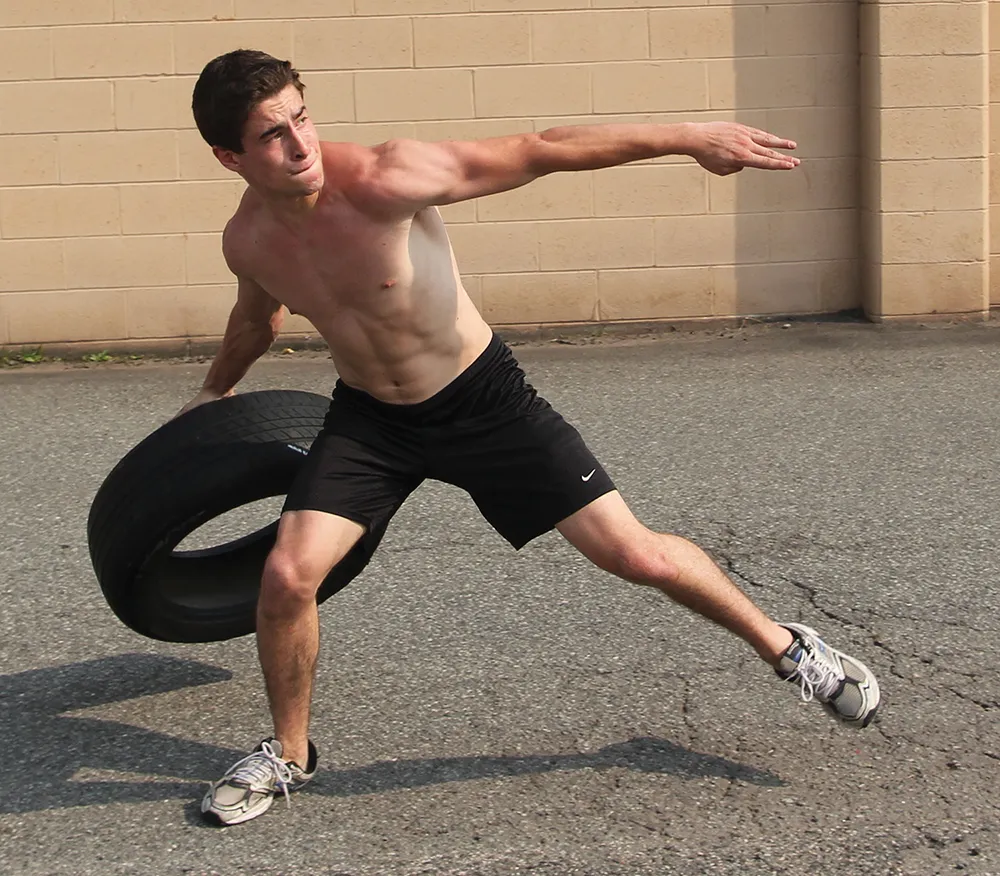Are you looking to enhance your performance in wrestling and gain an edge over your opponents? If so, incorporating the right exercises into your training program is crucial. Wrestling is a physically demanding sport that requires strength, endurance, and agility. That’s where weight training comes in. It should be an essential component of any wrestler’s regimen, helping to build the strength and power needed to overcome opponents.

In this post, we’ll find out the importance of weightlifting for wrestling and discuss the benefits it can provide. We’ll also share the 11 best exercises specifically tailored for wrestlers, equipping you with the knowledge to take your training to the next level.
Contents [hide]
11 Best Exercises For Wrestling
To excel in wrestling, it’s important to incorporate a variety of exercises that target the specific muscles and movements required for success on the mat. Here are the 11 best exercises that can help you build the strength, power, and endurance needed to dominate your opponents.
1. Deadlift
The deadlift is a fundamental exercise for wrestlers as it targets multiple muscle groups, including the glutes, hamstrings, quads, and back. It also helps improve grip strength, which is crucial for maintaining control during matches. Proper deadlift technique is essential to maximize the benefits of this exercise and minimize the risk of injury.
2. Pull-ups
Pull-ups are an excellent exercise for developing upper body strength and improving grip strength, which are both essential for wrestlers. By targeting the muscles in your back, arms, and shoulders, pull-ups can help you maintain control and power during takedowns, escapes, and holds.

3. Iso-row
Iso-row exercises focus on strengthening the muscles in your back and shoulders, which are crucial for maintaining proper posture and control in wrestling. These exercises can be performed using resistance bands or cable machines and help improve stability and overall upper-body strength.
4. Curl-hammer curl combo
The curl-hammer curl combo exercise targets the muscles in your biceps and forearms, which are important for maintaining a firm grip and controlling your opponents. By incorporating both regular curls and hammer curls into your training routine, you can develop well-rounded arm strength.
5. Iso-chest press
The iso-chest press exercise targets the muscles in your chest, shoulders, and triceps, helping you build upper body strength for powerful takedowns and control on the mat. This exercise can be performed using either dumbbells or resistance bands and should be incorporated into your training program.
6. Front squat
Front squats are a great exercise for developing lower body strength and explosive power, which are vital for executing explosive movements during matches. By placing the barbell in front of your body instead of on your back, front squats also help improve core stability and balance.
7. Shrug
The shrug exercise targets the muscles in your traps and upper back, helping you develop a strong and stable upper body. This exercise can be performed using dumbbells or a barbell and is particularly beneficial for improving your ability to resist and control your opponent’s movements.
8. Body-weight skull crushers
Body-weight skull crushers are a body-weight exercise that targets the triceps, which play a significant role in maintaining arms control and executing effective holds. By incorporating this exercise into your routine, you can improve your arm strength and endurance.

9. Body-weight hamstring bridge
The body-weight hamstring bridge exercise primarily targets the muscles in the back of your legs, including the hamstrings and glutes. This exercise helps improve lower body strength and stability, enhancing your ability to execute explosive movements on the mat.
10. Neck plank
The neck plank exercise targets the muscles in your neck and can help improve neck strength and stability, which are crucial for resisting and escaping from opponents’ holds. This exercise should be performed with caution, using proper form and gradually increasing intensity over time.
11. Split squat
The split squat is a unilateral exercise that focuses on building lower body strength and stability. By targeting each leg individually, this exercise can help improve balance, coordination, and power for explosive movements during matches.
Benefits of Strength Training for Wrestlers
Strength training is a crucial component for any wrestler, offering a wide range of benefits that can elevate both their performance and overall well-being:

Physical Benefits:
- Increased Strength & Power: This is the most obvious benefit, allowing wrestlers to execute takedowns, throws, and escapes with greater force and explosiveness.
- Improved Endurance: Wrestling demands both muscular and cardiovascular endurance. Strength training builds stronger muscles, enabling them to work longer and fight off fatigue.
- Reduced Injury Risk: Stronger muscles and tendons better support joints, lowering the risk of strains, sprains, and other injuries common in wrestling.
- Enhanced Flexibility: Many strength training exercises incorporate dynamic stretches, improving flexibility for better technique and maneuverability.
Mental Benefits:
- Increased Confidence: Seeing strength gains and improved performance naturally boosts confidence, a key psychological factor in wrestling.
- Mental Toughness: Strength training often requires pushing through discomfort, building mental resilience and grit essential for wrestling success.
- Improved Focus & Discipline: Consistent adherence to a training program instills discipline and focus, transferable skills valuable in both wrestling and life.
Additional Benefits:
- Weight Management: Strength training helps build muscle mass, which burns more calories at rest, aiding in weight management, often crucial for different weight classes.
- Stronger Bones: Weight-bearing exercises stimulate bone growth, making wrestlers less susceptible to bone injuries.
- Improved Overall Fitness: Strength training benefits extend beyond wrestling, improving general fitness and well-being.
Frequently Asked Questions
What do wrestlers workout?
Wrestlers need to maintain a high level of cardiovascular fitness. Cardio workouts can include running, swimming, cycling, and intense interval training. These exercises build endurance and help you maintain high energy levels during matches.
What are the best muscles to build for wrestling?
Wrestling is primarily a pulling sport when it comes to the upper body. Pulling in single legs, jacking up double unders, and snapping your opponent down all requires strong and powerful Lats, Rhomboids, Biceps, and Middle/Lower Trapezius.
How do I get better shape for wrestling?
Strength Training: A well-structured program, including squats, deadlifts, and bench presses, helps build muscle and power. High-repetition bodyweight exercises like push-ups and pull-ups complement weightlifting.
Are bicep curls good for wrestling?
Yes, freestyle wrestling requires both bicep and latissimus dorsi (lats) muscle strength. These muscle groups are important for executing various techniques, such as takedowns and maintaining control over opponents.

Hello, I’m Ravindra. Over the years, I’ve immersed myself deeply into the world of fitness and health, transforming both my body and mind. Writing has allowed me to share my journey, insights, and expertise with those just starting out and seasoned fitness enthusiasts alike. Beyond just routines and diets, I believe in inspiring others to adopt a holistic approach to well-being.
